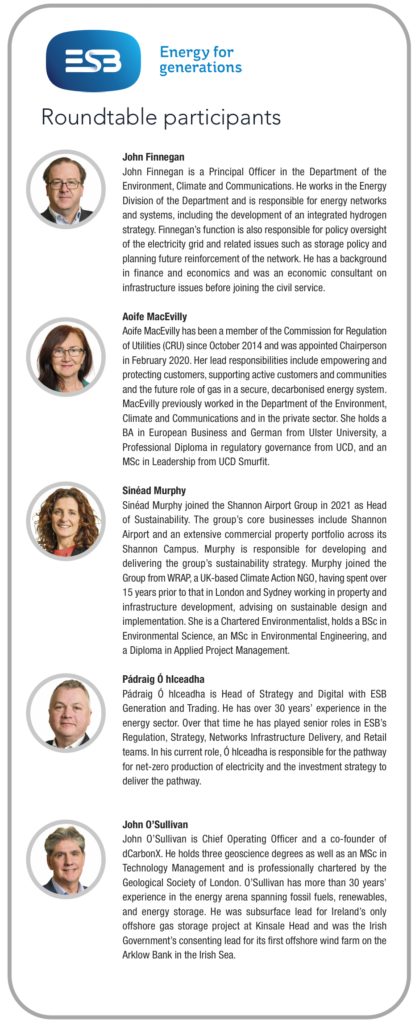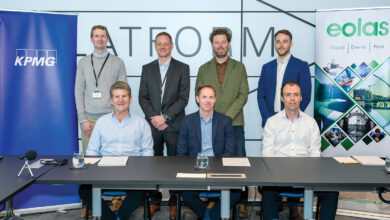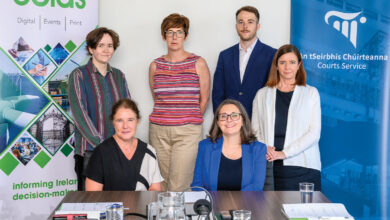Building Ireland’s hydrogen economy
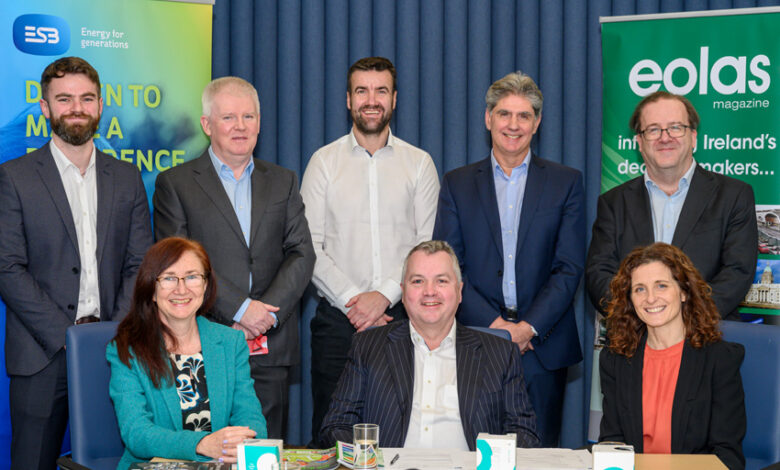
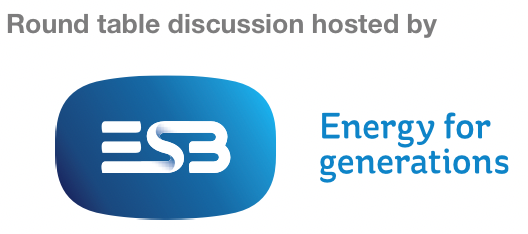
To set the context for the discussion, we start by asking Pádraig about ESB’s plans for the development of greenhydrogen production and storage in Ireland.
Pádraig Ó hIceadha
ESB aims to be a major player in the future zero carbon energy system in Ireland, delivering in all the key areas. We have large-scale renewable energy ambitions in wind and solar energy, particularly in offshore wind energy. We envisage we will have three energy storage clusters on the island: one centred around Dublin, with offshore wind energy and energy demand from the city; one centred around Cork Harbour; and our Green Atlantic project centred around Moneypoint, County Clare. This project aims to harvest the significant renewable resources off the west coast and will utilise the Shannon Estuary to become the largest green energy hub on the island. The fingers from these clusters will be renewable energy production, storage capability – either compressed hydrogen or methane – and other energy intensive sectors such as back-up power generation or fertiliser production. The Green Atlantic project is the first project to develop that area as a hub.
To what extent will green hydrogen contribute to Ireland’s net zero future?
Aoife MacEvilly
Hydrogen is an important area. The electricity system is evolving into a wind and natural gas system and if we want to go to the next stage of decarbonisation, hydrogen will be crucial. It will also play a role on the other hand to decarbonise areas in transport and heating. Hydrogen is also an indigenous source of energy which will help our economy and security of energy supply. It is not just a national opportunity; green hydrogen is an incredible national asset for Ireland and could drive our national wealth, by exporting renewable energy to Europe and beyond.
John Finnegan
It is hard to imagine a zero-carbon future without hydrogen. How else are we going to decarbonise heavy transport, freight transport, long distance passenger transport, and industrial heat? From our consultation on the hydrogen strategy, the sector sees hydrogen as having a key role as an energy storage medium. The current energy system is incredibly seasonal, particularly if you look beyond electricity. We use a multiple amount of energy in winter compared to summer. If we have a zero-carbon energy system, we will need some medium that allows us to store huge amounts of energy generated from renewable sources, such as hydrogen or molecules produced from hydrogen. It can seem like a magical substance; it acts like a fossil fuel but does not produce carbon dioxide. It offers huge potential, and we need to prioritise its development in Ireland.
John O’Sullivan
When I grew up in Cork in the 1970s, we lived in a hydrogen economy using town gas, which was 50 per cent hydrogen. People worry about the safety of hydrogen and maybe that is something to do with the Led Zeppelin album cover. Safety is an important consideration in dealing with any combustible gas. When people think about renewable energy, they think about wind and solar energy, not green hydrogen. From a developer’s perspective, educating the public is important. Renewable electricity will only take us so far. Without green hydrogen, or a similar molecule, we will not get to net zero carbon. There is a growing awareness, but not a total awareness, about the offshore wind opportunity. The recent SSE advert with people on the beach with the wind blowing was very good. There needs to be a public awareness to underpin the development of the hydrogen economy. We plan to have a 10 to 20 per cent hydrogen blend whereas we used to have 50 per cent in Victorian clay pipes.
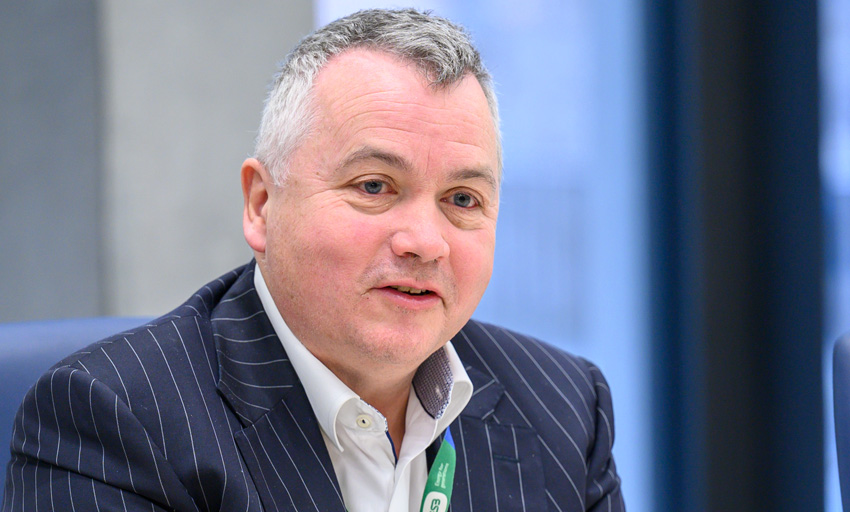
“It is not possible to envisage a net zero carbon energy system in Ireland that does not have hydrogen as one of its essential components.”
Pádraig Ó hIceadha
Sinéad Murphy
The aviation sector is one of the most difficult to decarbonise and it is projected to grow in coming years. Aviation currently contributes around 2.5 per cent of global carbon emissions. As other sectors decarbonise and the aviation sector grows, it is likely to be a much bigger percentage of emissions by 2050. It is imperative we decarbonise, even though it will be difficult, because we need a very high energy density fuel and the only one that is commercially available at scale today is kerosene. A lot of work is being done to look at pathways to decarbonise the sector and hydrogen will play a significant role; either with liquid hydrogen as a fuel for propulsion or as a component of a synthetic Sustainable Aviation Fuel (SAF) eFuel. The EU Destination 2050 report prepared by the largest aviation sector bodies in Europe sets out a pathway to decarbonise the sector and shows that potentially 60 per cent of energy used in flights will be based on hydrogen, either hydrogen propulsion or eFuels.
Pádraig Ó hIceadha
It is not possible to envisage a net zero carbon energy system in Ireland that does not have hydrogen as one of its essential components. Drawing a parallel with water, which we get from the environment, and wind energy, which we also get from the environment, we readily have water, but we have to store it. Hydrogen does for electricity what water storage does for water. Hydrogen gives large amounts of storage for zero carbon energy.
For areas that cannot be electrified, such as aviation, shipping, and high temperature industrial heat, we need to utilise the energy density and high temperature applications that come with hydrogen. It is only an element of the whole system and is not really a fuel as such but more fuel storage. It enables energy to be converted into a useable form or to be stored.
What steps must be taken to realise Ireland’s green hydrogen ambitions?
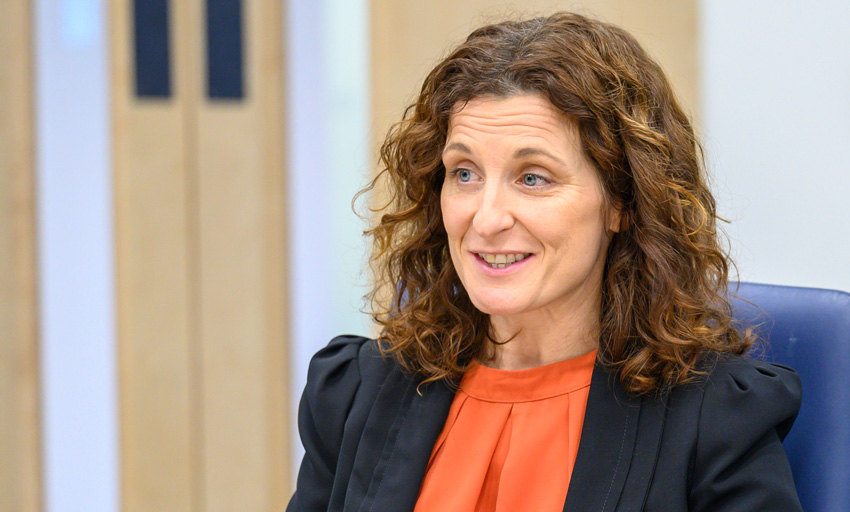
“We need to establish clusters and develop ecosystems because no sector is going to solve this on their own. We know this from developing a memorandum of understanding with ESB to look at a hydrogen facility in Shannon. It is not going to hang on aviation, transport, or energy alone; everyone has to work together.” Sinéad Murphy
John Finnegan
There is a need for a policy, which we are formulating, and a full range of government interventions. It is a whole new industry and sector, so there is very little there in terms of legislation and regulation. Suppliers need regulation and a certification system with a legal declaration of what green hydrogen is that can be fed into the distribution network, and the customer needs to be able to take that out of the network. We are starting with a blank sheet of paper, so there is a lot of governmental work that needs to be done, and we need to get ahead of safety, so it never becomes a public issue.
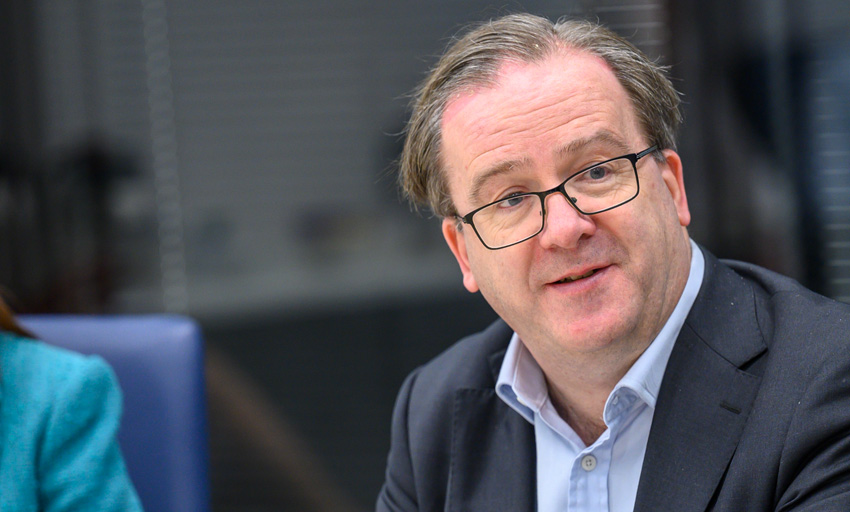
“Suppliers need regulation and a certification system with a legal declaration of what green hydrogen is that can be fed into the distribution network, and the customer needs to be able to take that out of the network. We are starting with a blank sheet of paper, so there is a lot of governmental work that needs to be done.” John Finnegan
Aoife MacEvilly
It is great to have the Department consulting on the strategy. Those hesitant to invest in gas-fired generation now see a decarbonised future through hydrogen and are getting back into that space. For the Government of Ireland to have a vision for how we are going to produce, use, and transport hydrogen is an incredible enabler. We are not going to get from here to there in one leap and we need to think about the phases we must go through to realise the ambition. We need trials where people can see the local benefits of wind farms, such as the use of green hydrogen to fuel local buses. We need people to understand the potential and get comfortable with the technology. We also need to build in safety in the design phase to give these projects immediate credibility.
Pádraig Ó hIceadha
We need an overarching plan, and in our view that should be for the entire energy sector rather than treating electricity or hydrogen in isolation. All of these things are connected. In 2019, we had impressive renewable penetration in electricity, but if you look at our entire energy sector, which is 170 TWh not including aviation, we are 9 per cent of the way to our goals 30 years into these projects and need to do the balance of that 90 per cent in the next 20 years. We need a step change in the pace of renewables, and renewables in the context of the entire energy system. We need a policy framework that makes investment more reliable and investment in hydrogen storage.
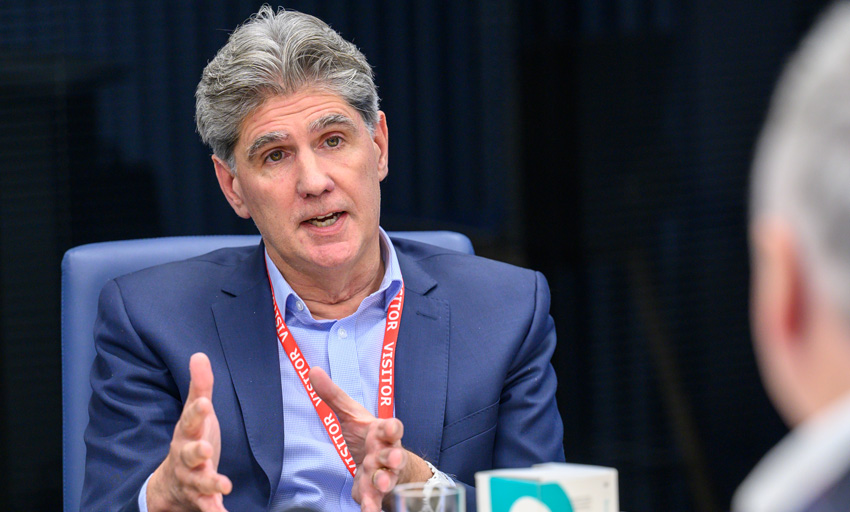
“The three challenges we have around hydrogen, because it is related to offshore wind deployment, are the three Ps: policy; port infrastructure, as we only have one on the island currently capable and it is outside of our jurisdiction, in Belfast; and people, skilling them.” John O’Sullivan
John O’Sullivan
The feedstock for green hydrogen is offshore wind, so getting going there is critical to getting electrolysers and storage going. Wind developers come to us saying that their projects are not predicated on connecting to a 5GW grid because it is too small, so they need storage. The importance of storage for people investing is huge. With 50GW of offshore wind on the system on a given day and a 5GW grid, we will need storage to unlock the wind opportunity. There is a great opportunity for Ireland to extract maximum value here.
Sinéad Murphy
We need to establish clusters and develop ecosystems because no sector is going to solve this on their own. We know this from developing a memorandum of understanding with ESB to look at a hydrogen facility in Shannon. It is not going to hang on aviation, transport, or energy alone; everyone has to work together. For example, there is a Hydrogen Valley being developed in Copenhagen based around aviation, shipping, logistics, and energy. Establishing those clusters would be an important step on the journey.
How can Ireland cultivate a hydrogen supply chain?
John Finnegan
There are supply chain issues in offshore wind, onshore wind, housing, and there are equally going to be in hydrogen because we have huge ambitions, but Scotland and the Netherlands do too. There is a limited number of people who make this kit and to book slots with those people, you need to be ahead of consumers. The first step is government policy and the second is setting ambition, making hydrogen a national priority with a high target. Our first step has to be a strategy that says that Ireland will be one of the biggest and one of the earliest customers for the supply chain.
John O’Sullivan
In the 1920s, we did Ardnacrusha; in the ’70s, we did Kinsale Head; and now 50 years on, it is going to be hydrogen. The three challenges we have around hydrogen, because it is related to offshore wind deployment, are the three Ps: policy; port infrastructure, as we only have one on the island currently capable and it is outside of our jurisdiction, in Belfast; and people, skilling them. The clusters are critical; I come from an oil and gas background and the only area we ever developed a cluster was in Cork, around Kinsale Head. We see three logical clusters in Shannon, Cork, and Dublin, and around those clusters you will see supply chains developing. We have the highest resource density in offshore wind in the European Union, we should be bringing people into these clusters to initialise the industry. If we are late, we will get marginal prices for the product as opposed to being a premium supplier. We must move carefully but quickly.
Sinéad Murphy
The scale of hydrogen required for aviation is massive. Globally, we use 1.1 billion litres of kerosene a day and to replace that will mean a huge demand for hydrogen. We need to look to sectors where we know there will be such long-term demand, that will be a key step.
Pádraig Ó hIceadha
If we have an overall roadmap for our overarching decarbonisation journey that says that the necessary supports will be brought forward, that allows people to cohere and play their individual roles on the production, storage, and demand sides. That plan needs to figure out how we build both supply and demand in parallel for the three key sectors of heavy-duty transport, aviation, and industrial heat and power generation. We know what an endgame would look like, so the question now is how we plot a course and five-year milestones along the way. We have three large infrastructure cycles to transform the energy system between now and 2050; we need to get on with it.
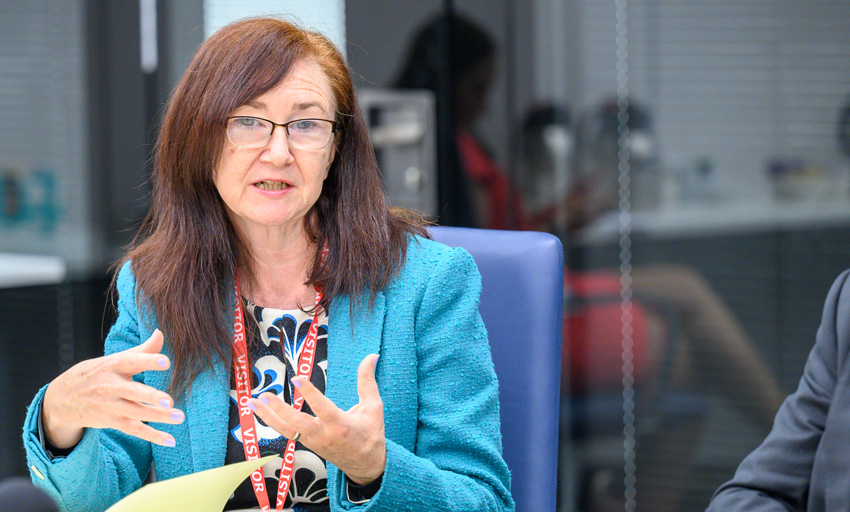
“Those hesitant to invest in gas-fired generation now see a decarbonised future through hydrogen and are getting back into that space. For the Government of Ireland to have a vision for how we are going to produce, use, and transport hydrogen is an incredible enabler.” Aoife MacEvilly
Aoife MacEvilly
There is a requirement for massive investment in infrastructure of all kinds to enable this vision. We would be looking at to what extent we could use existing infrastructure, for instance the first steps around hydrogen transport might be through blending within the natural gas network as a way to deliver it to hard-to-decarbonise sectors. There is potential there to use the infrastructure people have already paid for, at least to a certain percentage. The question the EU is grappling with is whether or not you build separate hydrogen chains alongside the gas network or do you start converting it. We have to think about that as potential for minimising the level of investing in completely new infrastructure. Ireland on its own cannot finance the infrastructure needed for green hydrogen and renewable electricity export, so we might want to interest the European Commission in our potential and have them thinking about things like trans-European network grants.
What socioeconomic benefits will the deployment of green hydrogen unlock for the Shannon region?
Sinéad Murphy
There is great potential. There are benefits as a result of the renewable industry itself, but the bigger prize will come from a stream of green hydrogen enabling industry along the Shannon Estuary. Providing a green and secure supply of energy will be a significant attraction for industry. Attracting industry will mean more jobs and more opportunities. We have great universities in the region who could provide the skills needed for good quality jobs in a region that many young people today are seeking. There is potential for real benefit for rural and coastal communities, which would help to balance the economy.
What is the single greatest challenge to the delivery of green hydrogen at scale?
Pádraig Ó hIceadha
The technologies already exist and that is not a major risk or challenge. We have a huge amount of offshore floor space to generate offshore wind energy. However, ourselves and a lot of other countries are looking to accelerate this opportunity at the same time. Therefore, the supply chain for equipment is going to be a key strategic issue. First movers will have a huge advantage, building scale and expertise. The scale of the challenge and our ambition level is the real challenge.
Sinéad Murphy
It is really a chicken and egg problem. If you do not build the infrastructure, you cannot enable the industry. Our MOU [memorandum of understanding] with ESB is all about taking steps to put infrastructure in place that will enable some sectors to decarbonise. If we do not build the infrastructure, we will potentially miss out on opportunities. The challenge is in taking those early steps.
John O’Sullivan
The biggest challenge is lack of ambition. We have the resource. Wind turbines and electrolysers are not new technologies. We have a huge opportunity but without the ambition we will be tinkering around the edges. It needs to be led from the top of government and it should be led by the Taoiseach. It is a huge national opportunity, but we need ambition and a vision. We have the highest sustained offshore wind speeds in the European Union, and we should be exploiting that natural resource for Europe and for our citizens.
John Finnegan
Public acceptance is a big challenge. The public is constantly being bombarded about new technology and new trends. People need to see it is real and that it is solving a problem. They need to see actual community-based projects that make the link from wind turbines to hydrogen buses. It is certainly a cross-government effort. We are increasing our offshore wind target by another 2GW to 7GW and with the grid constraint the additional 2GW will be for green hydrogen. Every problem is an opportunity.
Aoife MacEvilly
The biggest challenge is the ability to get major projects through planning. It is a major constraint for all infrastructure projects in Ireland. To deliver the infrastructure for green hydrogen we will need to see the reform of the planning system, which is under consideration. It is widely recognised that we need additional resources put into the planning system. Part of this will also be public acceptance, as much of the delay in planning is people appealing decisions or applying for judicial reviews. We need to make people comfortable with the infrastructure and that they see the need for it.
